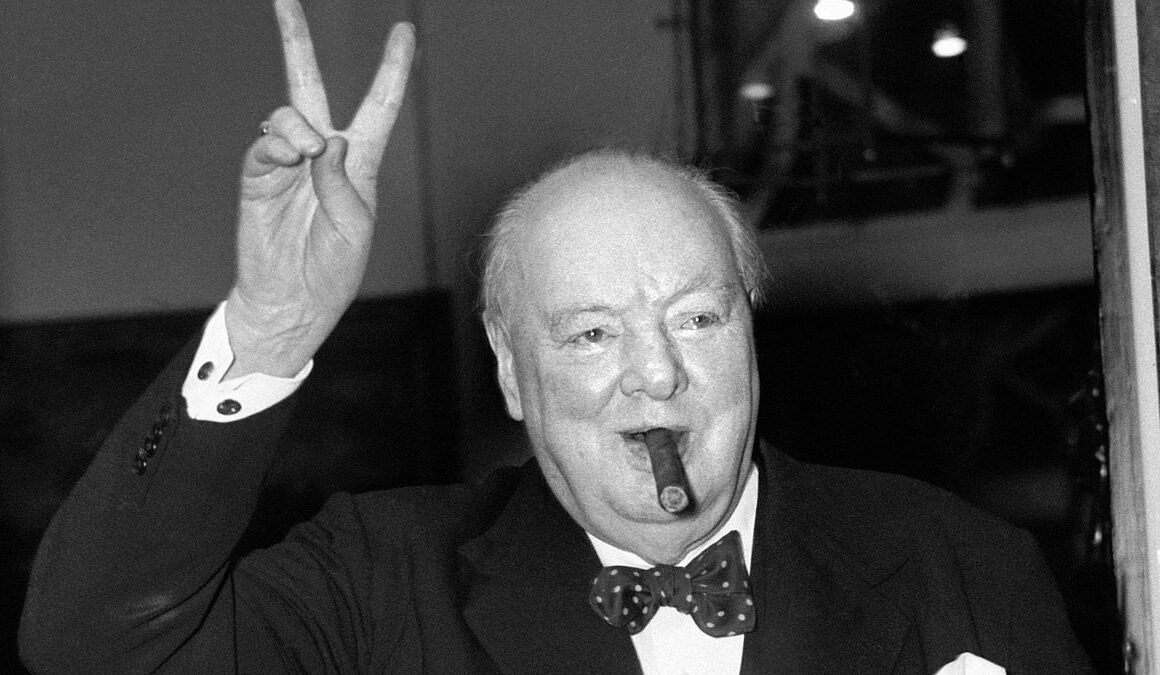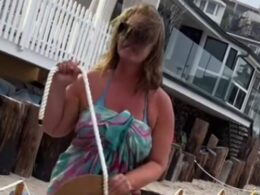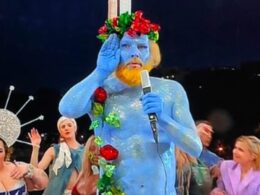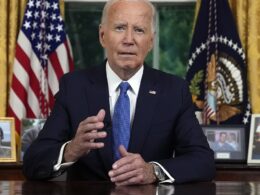A portrait of Winston Churchill is going to be hung alongside context of his links to ‘racism, slavery and colonialism’ after an artwork review by Tory-led Hertfordshire County Council.
The depiction of the wartime prime minister – painted in 1967 as a replica of a 1943 print – will remain in view at County Hall, in Hertford, as it awaits a suitable explanation of the ties.
Other artwork due to appear alongside caveats following the review include portraits of 19th Century PMs Viscount Melbourne and Lord Palmerston, according to The Telegraph.
It is not the first case of Churchill has been controversially linked to colonialism, racism and slavery.
The National Trust faced backlash in 2021 when an audit of their properties resulted in information displays at Chartwell, his former home in Kent, noting that the politician served as Colonies Secretary in the 1920s and had opposed independence for India.

A 1963 portrait of Winston Churchill is going to be hung alongside context of his links to ‘racism, slavery and colonialism’ after an artwork review by Tory-led Hertfordshire County Council. The wartime PM is seen in 1954

The picture had been on display in Hertfordshire’s County Hall (pictured), but will not be back on show, along with many other historical figures’ depictions, until the recontextualisation is complete
Though Churchill is regarded as one of the UK’s greatest Prime Ministers ever for his World War II triumph, many views and actions which would now be regarded as racist have drawn criticism, especially since the Black Lives Matter movement became more prominent in 2020.
Before WWII, in 1937, he said he had no sympathy for Native Americans or black people in Australia, who were enslaved and succeeded by white colonisers.
Churchill said: ‘I do not admit that a wrong has been done to these people by the fact that a stronger race, a higher-grade race, a more worldly wise race to put it that way, has come in and taken their place.’
He took little action in 1943 when a famine in India, then still part of the British empire, killed 3million. The prime minister of the day even appeared to blame Indians for the food shortage, claiming they ‘breed like rabbits’. The famine was sparked by the Japanese occupation of Burma a year earlier, which affected rice supplies.
Earlier in his political career, Churchill advocated the use of chemical weapons against ‘uncivilised’ Kurds and Afghans. In a 1919 war memo he wrote: ‘I cannot understand this squeamishness about the use of gas. I am strongly in favor of using poisoned gas against uncivilised tribes.’
William Lamb, second Viscount Melbourne, is a historical figure whose image will remain in storage in Hertfordshire.
His government presided over the First Opium War, which saw British forces protect British trafficking of opium into China against its government’s wishes. The conflict saw Hong Kong become a British colony.
Viscount Palmerston, Henry John Temple, led the expansion of the British Empire as Prime Minister from 1859 to 1865 and also served as Foreign Secretary under Viscount Melbourne.
Palmerston’s premiership also coincided with the American Civil War, and though he was a vocal opponent of the slave trade, his government took a neutral stance.
Other figures whose portraits will remain in storage until suitable explanation of similar context can be provided are Robert Arthur Talbot, another PM during the empire era, Edward Bulwer-Lytton, a 19th-century colonial secretary, and Cecil Rhodes, Prime Minister of the former Cape Colony.
Hertfordshire County Council said work to contextualise its art was not a priority, though, and nothing was moved into storage as a direct result of the review.
The council – Conservative led since 1999 – is apparently prioritising the conservation of its collection first and foremost.









